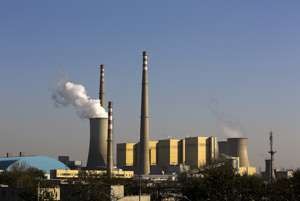
US, China should follow through on Paris Treaty commitments
Clear energy efficiency and emission standards coupled with consistent measurement, reporting of climate factors is crucial for carbon emission goals

G20 summits come and go without the world paying much attention. Yet the one recently held in Hangzhou, China, is worth noting. The US and China formally ratified the Paris Treaty on global warming, which aims to cut carbon emissions enough to keep global temperature increase below 2°C.
The US and China are together responsible for around two-fifths of global carbon emissions, so their ratification brings the treaty closer to the 55 per cent threshold needed for effectiveness.
It is a strong signal that governments intend to take action this time. Hence, I believe investors can no longer ignore climate change. Some may question the science, but all are faced with a tide of climate-related regulations and technological disruption. The good news: climate-aware investing is possible without compromising on traditional goals of maximising investment returns.
From an investor perspective, climate change creates risks and opportunities, in four main areas today:
● Physical: more frequent and severe weather events over the long term.
● Technological: advances in energy storage, electric vehicles or energy efficiency undermining existing business models.
● Regulatory: tightening emissions and energy efficiency standards, and changing subsidies and taxes.
● Social: changing consumer preferences and pressure groups advocating divestment of fossil fuel assets.
The longer an investor’s time horizon, the more climate-related risks compound. Yet even short-term investors can be affected by regulatory and policy developments, the effect of rapid technological change or an extreme weather event.
Investors can incorporate climate awareness into their portfolios in various ways. One approach is to adopt tools and processes to systematically integrate environmental metrics into the research process, including fossil fuel usage, water consumption and carbon intensity. Once investors understand their exposures, they can make informed decisions about how best to deal with climate risks. Another way is to optimise portfolios by reweighting holdings away from climate risk. Our research shows one can reduce a global equity portfolio’s carbon emissions by 70 per cent with an annual tracking error of only 0.3 per cent compared with the index. We also find that a portfolio focused on companies with the best energy efficiency records can outperform its benchmark and achieve over time far lower carbon emissions.

Today’s investors, alongside companies and policymakers, can contribute to a substantial reduction of carbon emissions in the years to come. For investors, comprehensive analysis of the fast-growing trove of environmental, social and governance (ESG) data is important, as is the integration of specific climate factors into the investment process. Engagement is also key.
As a large asset manager, we prefer dialogue over divestment, because the biggest polluters have the greatest capacity to move the dial if they modify their behaviour.
Companies, too, must take steps to manage climate-related risks and seize opportunities. We see three priorities:
(1) Incorporate climate factors into strategic planning. BlackRock has long advocated for corporate executives to set long-term strategic plans that include consideration of relevant ESG factors.
(2) Help investors understand how the company is dealing with climate risks and opportunities – and how these affect the firm’s long-term value and sustainability.
(3) Making disclosures on climate risks more forward looking, granular and standardised.
Finally, governments can help ensure the transition to a low-carbon economy is smooth by providing clarity on the measures they intend to take to achieve the Paris Treaty goals. This involves a focus on actions only governments can take, such as mandating clear energy efficiency and emission standards, and setting standards for consistent measurement and reporting of climate factors. Particularly important is the design of policy frameworks that result in higher and more consistent carbon prices – which many economists believe are the most cost-effective way for countries to achieve their Paris Treaty pledges.
The world is rapidly using up its carbon budget, the Intergovernmental Panel on Climate Change estimated in its latest assessment in 2013. Yet the cost of emitting carbon is minimal or even negative for some producers and households. This is because current market prices arguably do not yet reflect the social costs of burning fossil fuels. The result is overconsumption. This externality is at the core of the climate challenge.
Higher carbon pricing would help address this. It would also help reduce investor uncertainty and encourage corporate innovation to cut greenhouse gases and raise energy efficiency. Some 1,000 global companies are already using an internal price on carbon or plan to do so soon, in an effort to mitigate risks from future regulation, according to a 2015 Carbon Disclosure Project survey. And governments are pressing ahead with carbon taxes or emissions-trading schemes. Thus, higher and more consistent carbon pricing is a scenario that investors should prepare for.
Philipp Hildebrand is vice-chairman of BlackRock and a member of the firm’s global executive committee